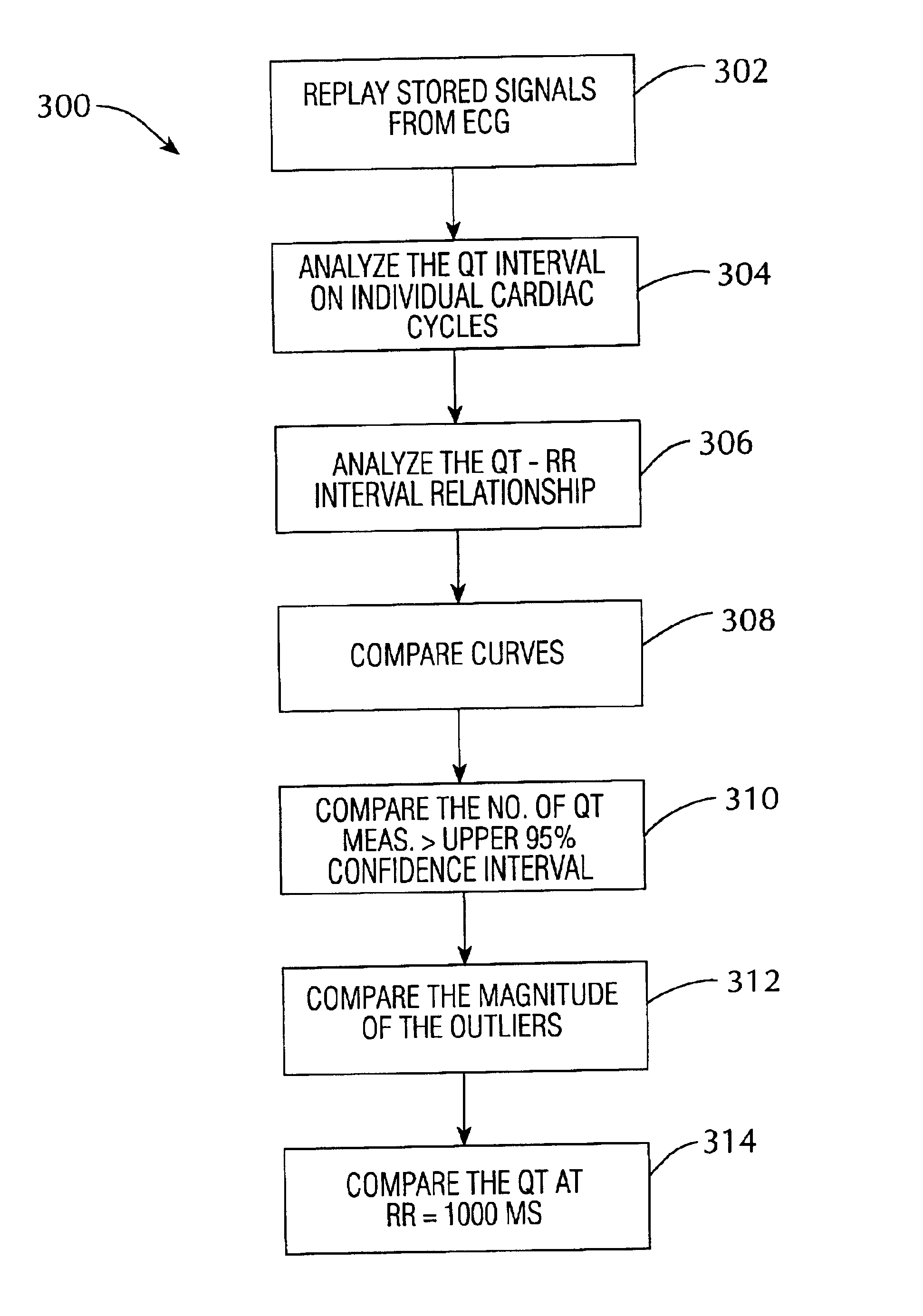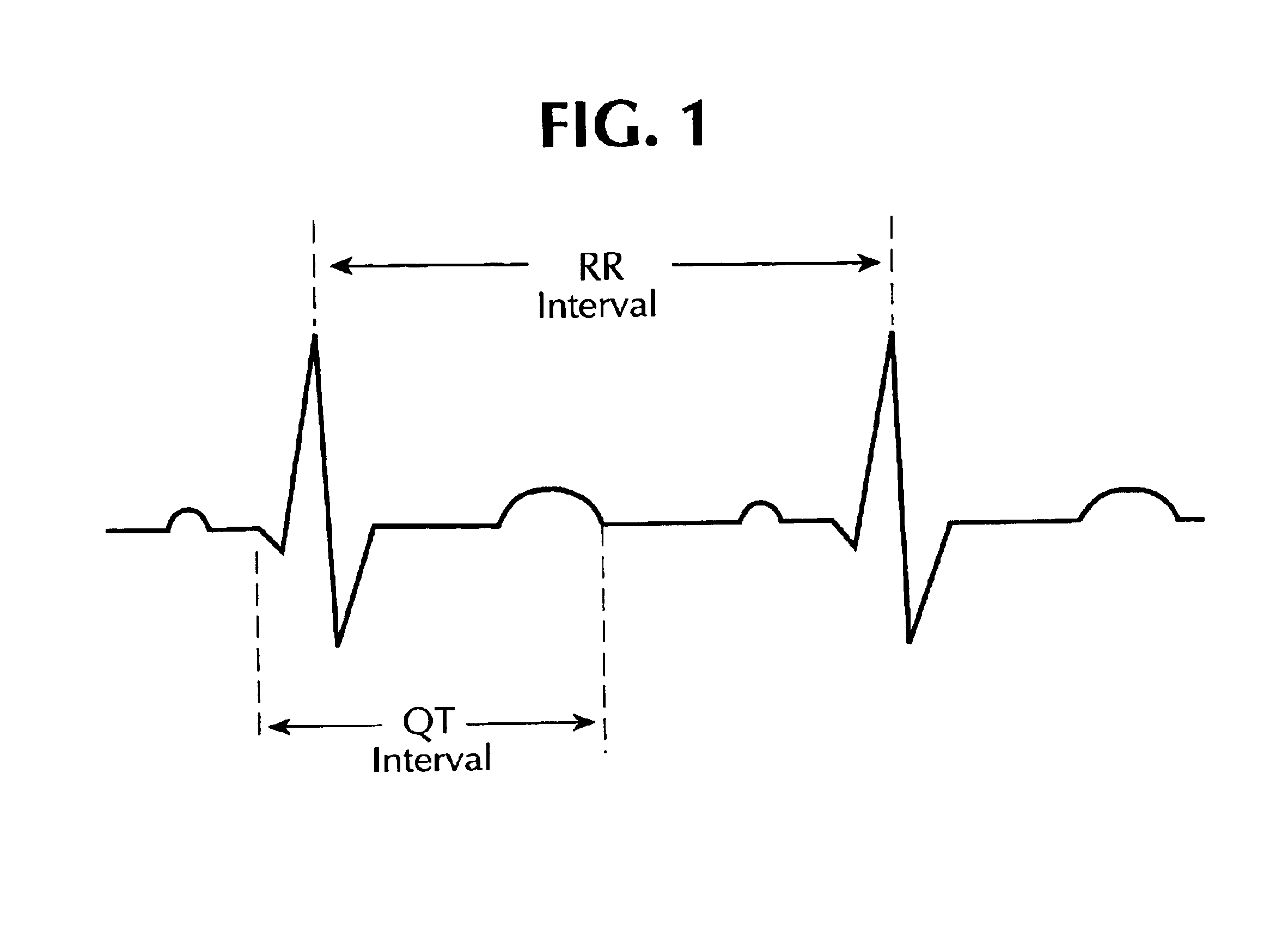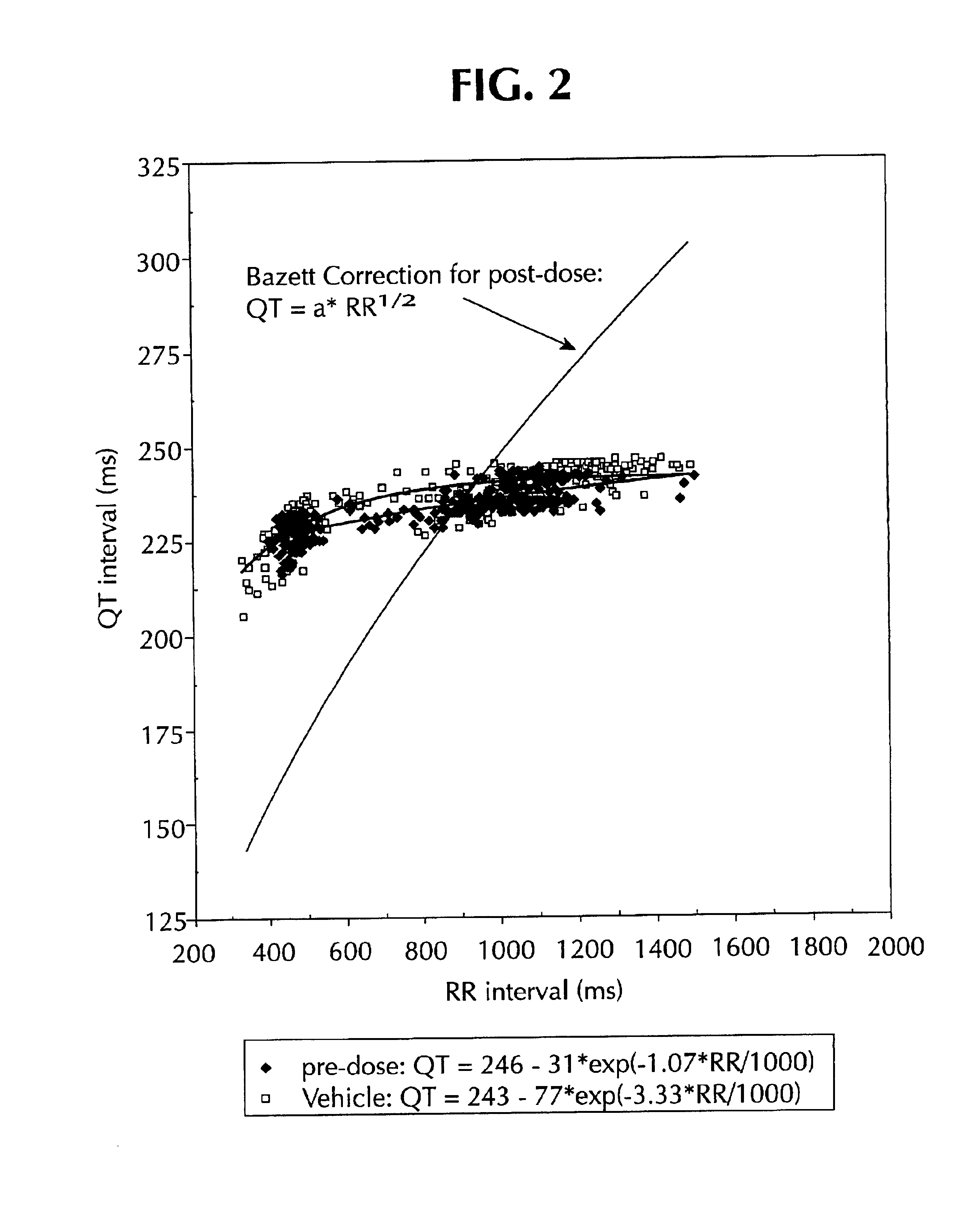System and method for statistical analysis of QT interval as a function of changes in RR interval
- Summary
- Abstract
- Description
- Claims
- Application Information
AI Technical Summary
Benefits of technology
Problems solved by technology
Method used
Image
Examples
Embodiment Construction
Reference will now be made in detail to the present preferred embodiment of the invention, an example of which is illustrated in the accompanying drawings. Wherever possible, the same reference numbers will be used throughout the drawings to refer to the same or like parts.
I. Recording of Electrocardiogram
A system for recording electrocardiogram data in accordance with the present invention is broadly shown in FIG. 6 as reference numeral 100. An electrocardiogram (ECG) monitor 104 is connected to a patient, such as a dog 102. Preferably ECG monitor 104 uses electrodes in the Lead II position, however, a QT measurement can be calculated from other ECG vectors, including Leads I and III, a VL, a VR, a VF, and all pre-cordial leads (V1-V6). A vehicle or test compound is administered to dog 102 with a compound administration device 106. The vehicle or test compound may be administered in various ways, including but not limited to orally, intravenously, or subcutaneous.
ECG monitor 104 pr...
PUM
 Login to View More
Login to View More Abstract
Description
Claims
Application Information
 Login to View More
Login to View More - R&D
- Intellectual Property
- Life Sciences
- Materials
- Tech Scout
- Unparalleled Data Quality
- Higher Quality Content
- 60% Fewer Hallucinations
Browse by: Latest US Patents, China's latest patents, Technical Efficacy Thesaurus, Application Domain, Technology Topic, Popular Technical Reports.
© 2025 PatSnap. All rights reserved.Legal|Privacy policy|Modern Slavery Act Transparency Statement|Sitemap|About US| Contact US: help@patsnap.com



